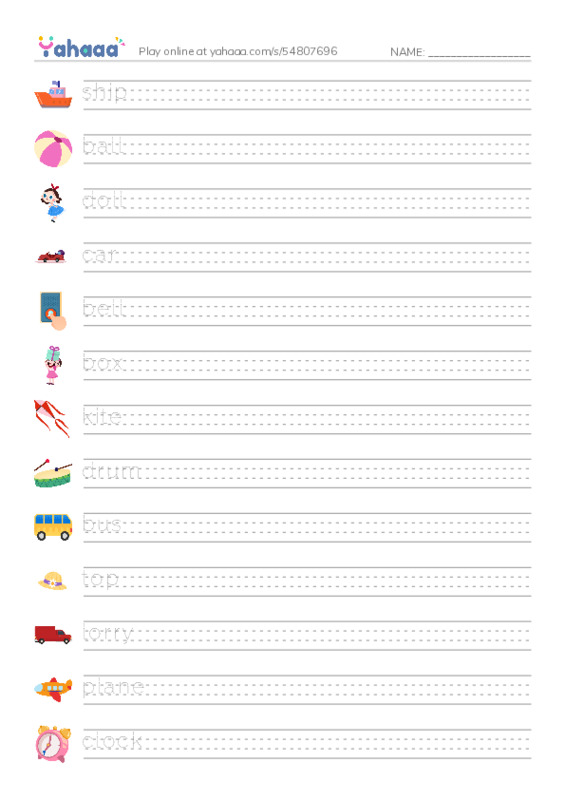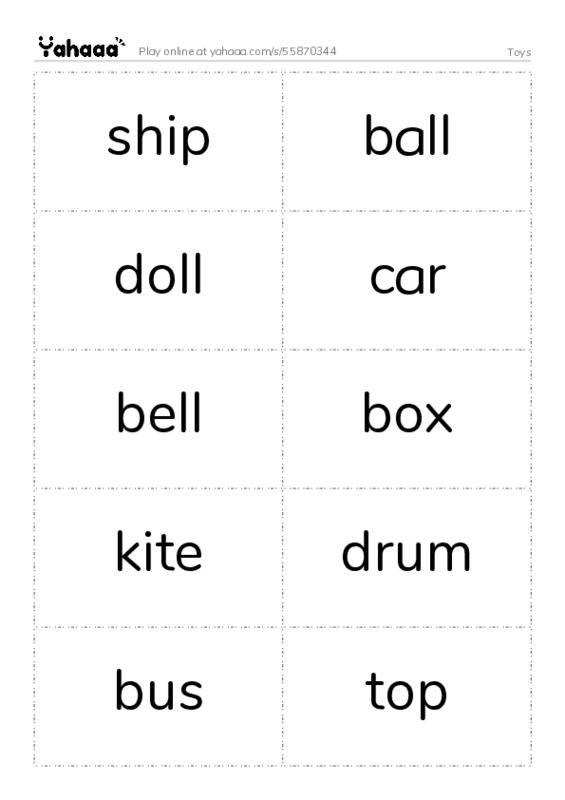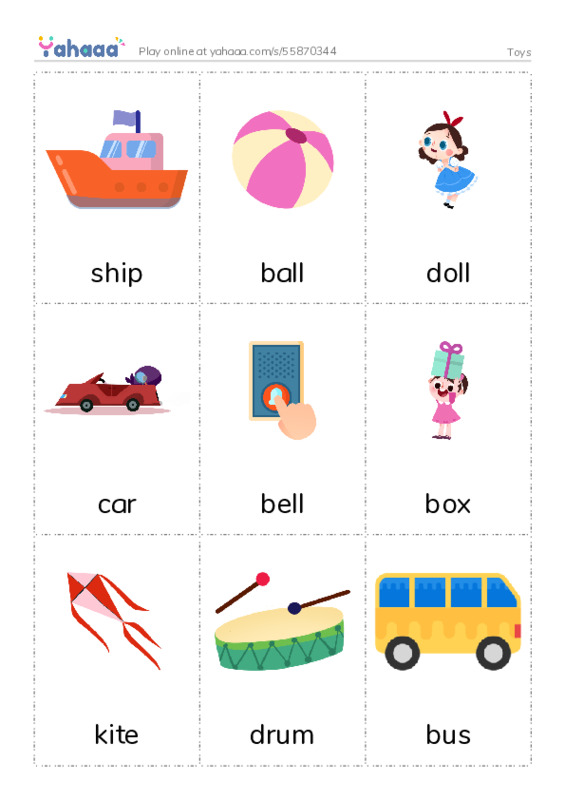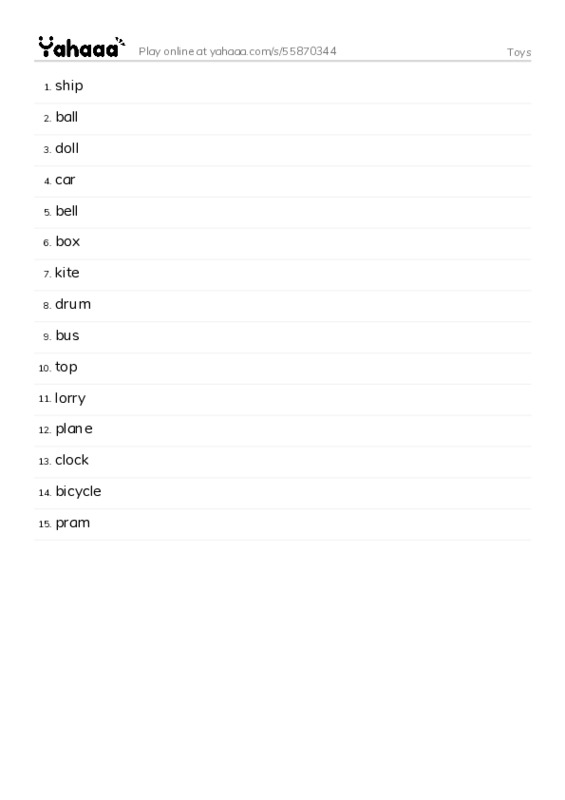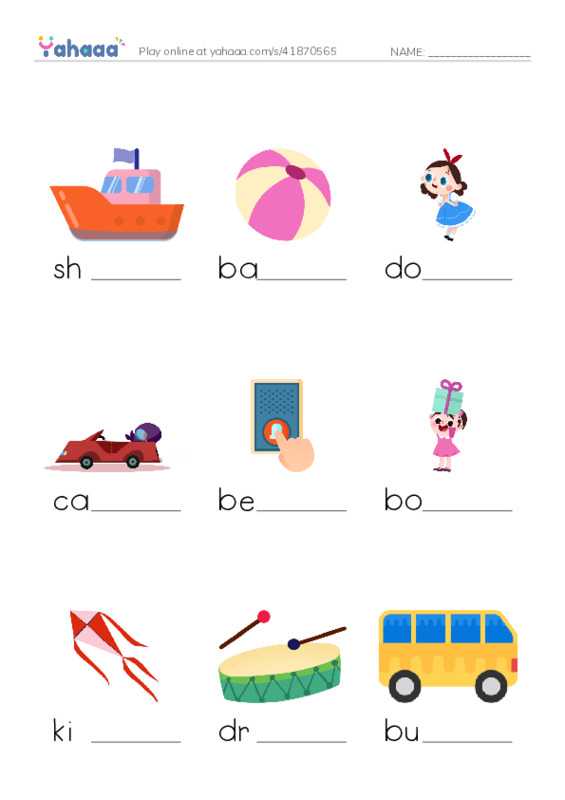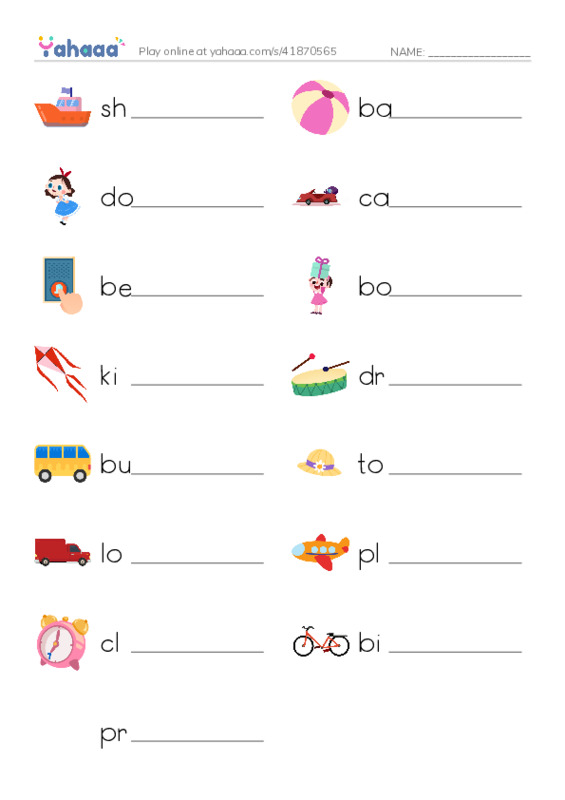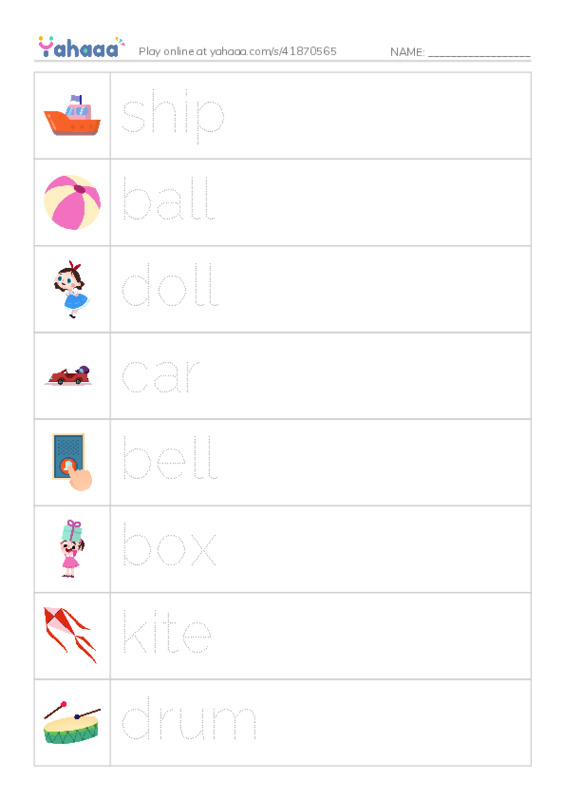Why is this the best writing between the lines free PDF toys worksheet?
A fun and free write-between-the-lines printable PDF worksheet about different toys for kids to learn English could include a variety of different activities and exercises. For example, the worksheet might include sentences about different toys, with the lines of the sentences spaced apart. Children would have to write the words of the sentences in the correct order between the lines, using the spaces provided. This would provide children with a chance to practice their English spelling and grammar, and to learn more about different toys.
In addition to write-between-the-lines exercises, the worksheet might also include other types of activities and exercises. For example, it might include matching games, where children have to match the pictures of the toys to the corresponding English words. It might also include word searches, where children have to find the names of the toys hidden in a grid of letters.
Overall, the worksheet would be designed to be both fun and educational, and to help children learn English while also learning about different types of toys. The online format of the worksheet would make it accessible and convenient for children to use, and would allow them to easily print out the worksheets and complete them at their own pace. This could make the learning process more engaging and interactive, and could help children learn more effectively. The write-between-the-lines format of the worksheet would provide children with a structured and focused way to practice their English skills, and could help them develop their spelling and grammar skills.
Why it is a great educational activity!
Writing between the lines is a good activity because it provides children with a structured and focused way to practice their English spelling and grammar skills. By writing the words of sentences in the correct order between the lines, children are able to practice spelling and grammar in a controlled and guided way. This can help them develop their skills and improve their proficiency, and can also help them understand the rules and conventions of English grammar.
Another advantage of writing between the lines is that it can be adapted to suit the individual needs and abilities of each child. For example, the sentences used in the activity can be adjusted in terms of difficulty, length, and complexity, so that children of different ages and abilities can participate and learn. This can make the activity more inclusive and engaging, and can help children of all abilities learn and grow.
Writing between the lines is a good activity because it provides a structured and focused way for children to practice their English spelling and grammar skills. It can be adapted to suit the individual needs of each child, and can be a valuable tool for helping children learn and improve their proficiency in English.
What do kids struggle with?
There are many different learning struggles that kids may face, and the specific challenges that a child experiences can vary depending on their individual abilities and needs. However, some common learning struggles that many kids may face include:
Difficulty with reading and comprehension: Many kids struggle with reading and understanding what they read. They may have trouble sounding out words, recognizing common sight words, or making connections between what they read and their own experiences.
Difficulty with math: Many kids struggle with math, and may have difficulty understanding basic concepts such as numbers, operations, and place value. They may also struggle with more complex concepts such as geometry, algebra, and calculus.
Difficulty with language: Some kids may struggle with language, and may have difficulty understanding and using grammar, vocabulary, and syntax. They may also struggle with listening and speaking, and may have trouble expressing themselves clearly and accurately.
Difficulty with attention and focus: Many kids struggle with attention and focus, and may have trouble staying on task and paying attention to what they are learning. This can make it difficult for them to learn effectively, and can lead to frustration and frustration.
Difficulty with organization and time management: Many kids struggle with organization and time management, and may have trouble keeping track of their assignments, materials, and schedules. This can make it difficult for them to stay on top of their work, and can lead to stress and anxiety.
